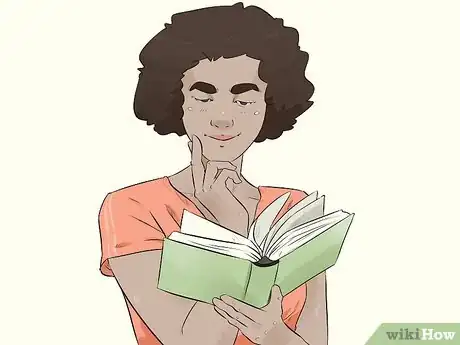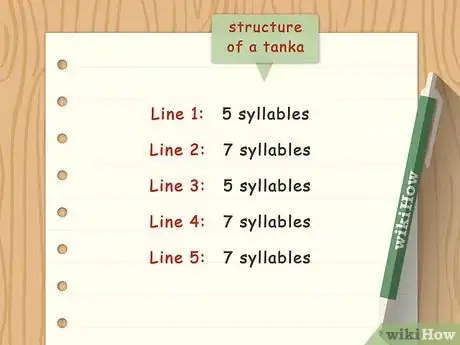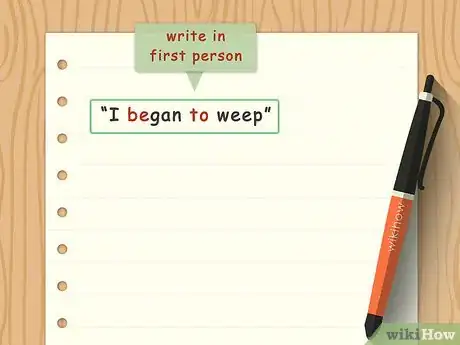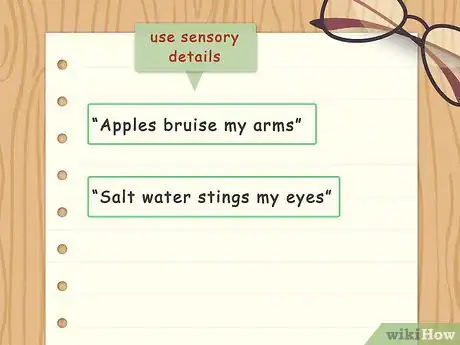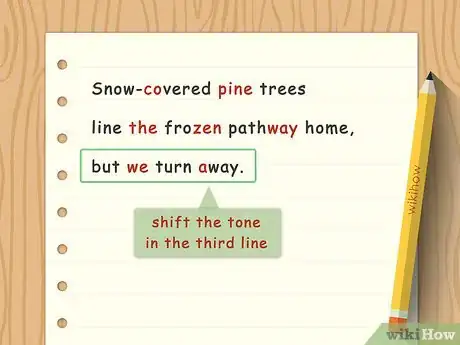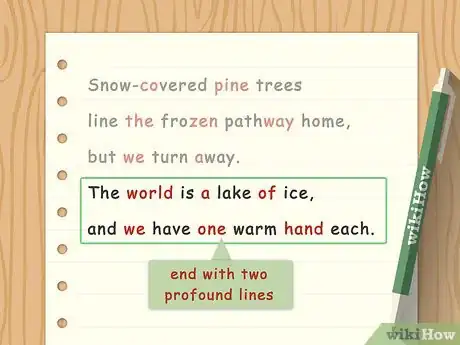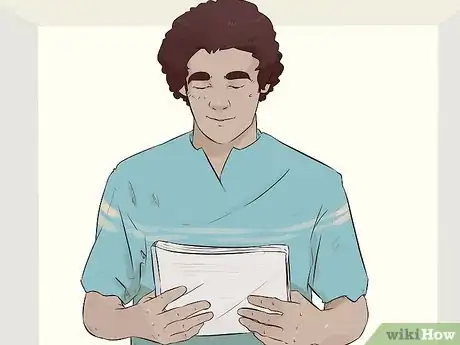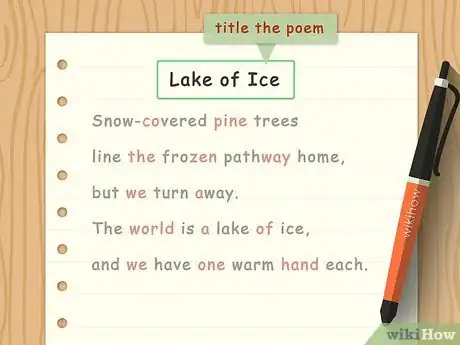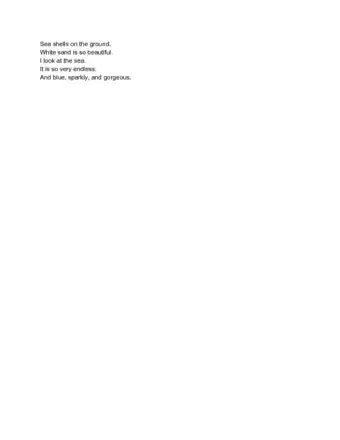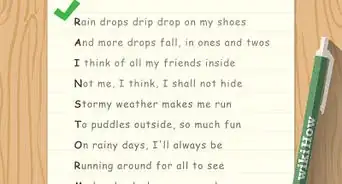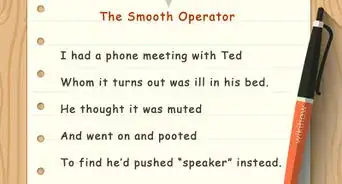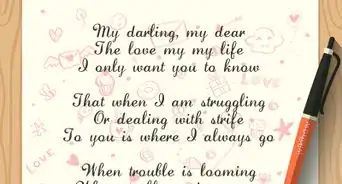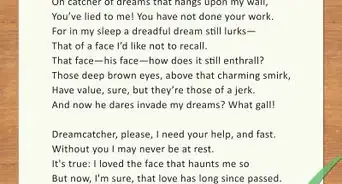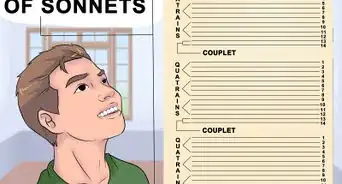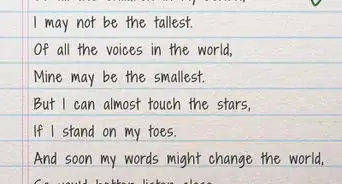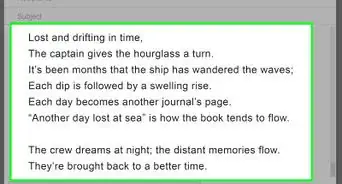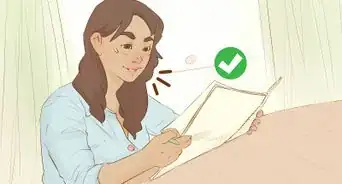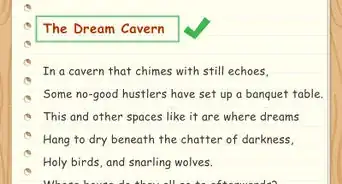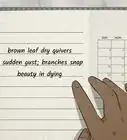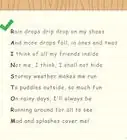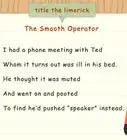This article was co-authored by Stephanie Wong Ken, MFA. Stephanie Wong Ken is a writer based in Canada. Stephanie's writing has appeared in Joyland, Catapult, Pithead Chapel, Cosmonaut's Avenue, and other publications. She holds an MFA in Fiction and Creative Writing from Portland State University.
There are 7 references cited in this article, which can be found at the bottom of the page.
wikiHow marks an article as reader-approved once it receives enough positive feedback. In this case, several readers have written to tell us that this article was helpful to them, earning it our reader-approved status.
This article has been viewed 169,824 times.
Tanka (短歌 tan-kah) poems are short poems that originated in Japan in the 13th century. They are five lines long and often convey deep feelings about nature, love, or desire. To write a tanka poem, start by brainstorming ideas. Then, create a draft using sensory detail and descriptive language. Polish your draft once it is done so the tanka is full of striking imagery and deep emotion.
Steps
Brainstorming Ideas for the Tanka
-
1Focus on a scene in nature. Tanka poems are similar to haikus in that their subject matter is usually about nature and the natural world. Think of a scene in nature that you find beautiful, stunning, or powerful. Pick an animal or plant in nature that you find inspiring.[1]
- To get inspiration for the poem, you can also go for a walk outside in a natural area like a park or a garden.
- You can also look at nature images online to get ideas for the poem.
-
2Write about an emotion like desire, love, or sadness. Tanka poems can also focus on strong emotions, and your experience of that emotion. Think of a moment where you felt strong desire or love for someone. Write about an experience where you felt sadness or despair.[2]
- For example, you may write about the sadness you felt when you failed a test. Or you may write about the desire you feel for a lover or a romantic partner in your life.
Advertisement -
3
Creating a Draft of the Tanka
-
1Follow the line and syllable structure of a tanka poem. A tanka poem is five lines long. It follows a set syllable pattern of five and seven syllables, similar to a haiku. The structure of a tanka poem is:[6]
- Line 1: 5 syllables
- Line 2: 7 syllables
- Line 3: 5 syllables
- Line 4: 7 syllables
- Line 5: 7 syllables
- Tanka poems do not use any punctuation.
-
2Use the first person point of view. Tanka poems are always written from the perspective of the poet. Use “I” to describe your feelings and emotions about the subject. Paint a picture of your experience for the reader from your point of view.[7]
- For example, you may have a line like, “I leapt off the apple tree” or “I began to weep.”
-
3Include sensory details. The poem should describe the subject using sensory details like sound, taste, smell, touch, and sight. Describe the subject using the senses so the reader is immersed in the poem.[8]
- For example, you may write, “Apples bruise my arms” or “Salt water stings my eyes.”
-
4Have a pivot or turn in the third line. A good tanka poem will start with two lines that describe what the poet experiences. The third line should then shift the tone of the poem, reflecting back on the first two lines. For example, you may have lines like:[9]
- Line 1: I leapt off the apple tree
- Line 2: Into the fresh water lake
- Line 3: I am nothing now
-
5End with two profound lines. The last two lines of the tanka poem should present a deep reflection or thought to the reader. The final lines should leave the reader with a strong emotion or feeling. Often, tanka poems end on a slightly sad or bittersweet note. For example:[10]
- Line 1: I leapt off the apple tree
- Line 2: Into the fresh water lake
- Line 3: I am nothing now
- Line 4: Without you and your sweet look
- Line 5: I swallow water and try
Polishing the Tanka
-
1Read the tanka poem aloud. Once you have completed a draft of the poem, read it out loud to yourself and listen to how it sounds. Notice if the poem adheres to the line and syllable scheme. Check that the poem flows well and has deep meaning, especially in the last two lines. Underline any awkward lines so you can revise them later.
-
2Show the tanka poem to others. Ask friends, family, and peers to read the tanka poem. Get feedback from them on the content of the poem. Ask them if they feel deep emotion or are moved by your poem.
- You can also show the poem to a writing group or a poetry group, if you are part of one.
-
3Title the poem, if you’d like. Traditionally, tanka poems are not titled. However, you can add a title to your poem, if you’d like. Pick a title that is simple and short. You can include the word “tanka” in the title.[11]
- For example, you may title a tanka poem, “Tanka: Apples” or “By the Lake.”
Sample Tankas
Community Q&A
-
QuestionDoes a tanka always have to be sad or bittersweet? Can it be happy too?
 LouisaCommunity AnswerThe point of a tanka is to convey deep, personal emotion. Even if it is not common, that emotion can of course be joy, elation, love, or contentedness.
LouisaCommunity AnswerThe point of a tanka is to convey deep, personal emotion. Even if it is not common, that emotion can of course be joy, elation, love, or contentedness. -
QuestionI don't understand the syllables in tanka. Is there an easier way to explain it?
 DonaganTop AnswererNo, it doesn't get any easier than Part 2, Step 1 above.
DonaganTop AnswererNo, it doesn't get any easier than Part 2, Step 1 above. -
QuestionIs the end of each line ABABB?
 DonaganTop AnswererTanka poems traditionally do not rhyme.
DonaganTop AnswererTanka poems traditionally do not rhyme.
References
- ↑ http://examples.yourdictionary.com/examples-of-tanka-poetry.html
- ↑ http://tankajournal.com/what-is-tanka/
- ↑ http://examples.yourdictionary.com/examples-of-tanka-poetry.html
- ↑ https://www.poetryfoundation.org/poems/46573/three-haiku-two-tanka
- ↑ http://www.cedargallery.nl/engjapan_poetry.htm
- ↑ https://www.youngwriters.co.uk/types-tanka-poem
- ↑ http://tankajournal.com/what-is-tanka/
- ↑ https://www.poetry4kids.com/news/how-to-write-a-tanka-poem/
- ↑ http://tankajournal.com/what-is-tanka/
About This Article
To start writing a tanka poem, pick a scene in nature you find especially powerful, like a storm, plant, or animal. Then, read examples of tanka poems online or at a library so you get an idea of their structure. When you're ready to begin writing, follow the tanka structure in your 5 lines of poetry by using 5 syllables in lines 1 and 3, and 7 syllables in lines 2, 4, and 5. You should also write the poem in the first person and use sensory details like sound, smell, and sight to describe your subject. For tips on how to introduce a pivot in line 3 and how to close your tanka poem, read on!


